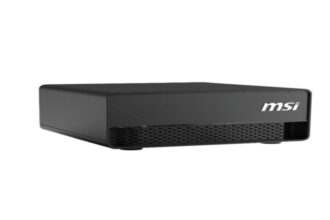Artificial intelligence (AI) has taken a fascinating turn with the introduction of the Mixture of Experts (MoE) architecture. This innovative model is designed to optimize efficiency and minimize operational costs, a necessary shift in the rapidly evolving tech landscape. By distributing tasks among multiple specialized models, MoE paves the way for significant improvements in performance.
Geoffrey Hinton, a pioneer in AI from the University of Toronto, first conceptualized the foundation of this arrangement in 1991. Instead of functioning as isolated “experts,” these smaller models collaborate as a cohesive network, each responsible for a segment of a larger task.
This architecture employs a sophisticated routing approach, effectively breaking down complex tasks into manageable units. A large language model, after extensive pre-training, sets up these smaller networks, while a central ‘traffic cop’ model orchestrates which segment handles what portion of the workload.
At its core, the MoE architecture seeks to increase computational efficiency by redistributing tasks among various components. This redistribution leads to lower costs and enhanced performance. The spotlight recently turned towards this framework following the introduction of the Deepseek architecture, which further refined the MoE approach, yielding unprecedented levels of performance.
Deepseek’s team leveraged this advanced configuration to create a foundation model that outperformed established players in the market while remaining relatively compact in size.
How does MoE operate?
The essence of MoE is its philosophical shift; rather than assigning distinct areas of expertise to each ‘expert,’ they function as collective efforts aimed at a shared objective.
A central gatekeeper within the MoE architecture is pivotal for allocating user requests to the most suitable neural networks. This strategy not only eases the computational demands across the model but also reduces the required processing power.
The flexibility of MoE architectures has inspired a variety of iterations among researchers worldwide. Beyond their main goal of economizing computational requirements, these designs also yield notable benefits: when properly executed, smaller models leveraging MoE principles can surpass their more extensive counterparts in certain tasks.
Additionally, MoE models tend to offer expedited training, although this can sometimes come at a higher cost. Crucially, they maintain efficient operations, ensuring only minimal losses in accuracy or output quality. This way, users can harness the advantages of large, resource-heavy AI structures without bearing the full brunt of computational demand.
Nevertheless, there are challenges to consider. Depending on the configuration of these expert systems, increased memory capacity may be necessary, along with potentially greater training expenses compared to traditional dense models.
It is essential to note that MoE is still evolving. Over the past four years, we have witnessed substantial breakthroughs, particularly in applications that have entered the mainstream of AI development.
The Commercial Impact
Leading companies such as Anthropic—with their Claude models—Mixtral, and Deepseek are at the forefront of MoE advancements. Notably, major players like OpenAI, Google, and Meta are also integrating MoE into their systems to enhance the efficiency of their smaller models.
A notable aspect of this evolution is the exploration by these influential organizations into both proprietary and open-source solutions, broadening the MoE landscape. Noteworthy frameworks being developed include Google’s GShard, Meta’s FastMoE, and Microsoft’s DeepSpeed-MoE.
The Open-Source Revolution
It’s crucial to highlight that the MoE technology expansion is not driven solely by financial power. Open-source AI stands to reap significant benefits from these advancements. Historically, open-source frameworks faced limitations due to budgetary and computational constraints, rendering them less competitive against corporate giants with abundant resources.
With the strategic implementation of MoE, open-source models could achieve remarkable performance gains, even within constrained infrastructures. The rollout of Deepseek, developed in China under a fraction of the typical Western budget, serves as a case in point, yielding impactful results.
As we gaze into the future, it’s clear that MoE will be a crucial force in the artificial intelligence landscape. The pressing question remains: will the innovations in this field continue to predominantly materialize from Western enterprises, or will advancements from the East take the spotlight?

























